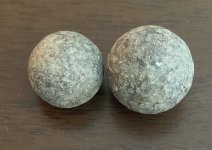Dig'n Bandera
Jr. Member
- Jul 9, 2007
- 33
- 0
- Detector(s) used
- White's DFX and my old BH Prospector DX as a backup!
I always read posts talking about Metal Detectors giving a "Strong" or a "Scratchy" sound. There have been many other descriptors for the sounds one's MD makes. I'm hunting with a Bounty Hunter Prospector DX. I think it's Bass Pro's version of the SS II or the 505, and my machine only makes 3 sounds; low, medium, and high pitched beeps. My question is this: Am I not distinguishing between subtle changes or does my machine only have 3 sounds? Thanks for the input.
Amazon Forum Fav 👍
Upvote
0




